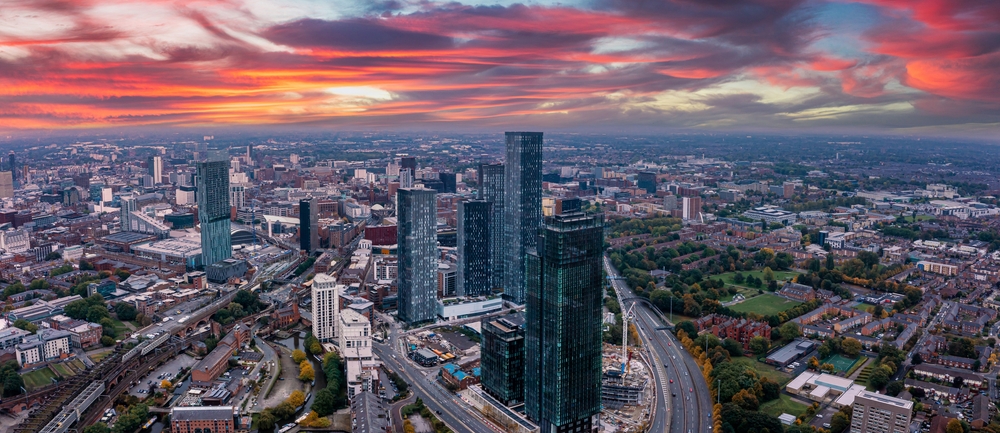Increased environmental awareness has led to a rise in eco-friendly housing construction across the country. There are many ways to make your home more “green,” including new innovations and proven methods of increasing sustainability. In addition to the many environmental considerations that make going green worth the nominal cost of installation, the marketability and property value of your home will also see noticeable improvement. Extended periods of drought have become commonplace in the Western United States, with the Los Angeles area being particularly affected. Water and energy conservation are just two of the many ways which you can improve the eco-friendly qualities of your home.
Use Locally Sourced Materials Inside and Out
Just as you can shrink your carbon footprint by purchasing food locally, using regionally-sourced building materials can improve the environmental-friendliness of your property. Reusing building materials and using products sourced from within your region are two ways to lessen the environmental impact of home construction. According to LEED certification standards, regional materials are defined as those which are “extracted, harvested, or recovered, as well as manufactured” within 500 miles of your home.
The use of locally-sourced materials goes beyond construction. Consider using native flora and local materials when planning your outdoor décor and landscaping. Water availability is limited in Southern California; planting vegetation that thrives in the area’s semi-arid climate saves money and helps you meet water-conservation goals in years of drought. A gardening guide is a great way to discover the different species of plant that are native to your region.
Solar Panels
For decades, homes in the United States have relied on unsustainable sources of energy. With costs rising and increased awareness of environmental considerations, homeowners are seeking alternatives for powering their homes. There is no better way to “go green” and shrink your carbon footprint than by adding solar panels to your home. Formally known as a photovoltaic (PV) rooftop system, the panels can be installed to be hardly noticeable on most homes, adding eco-friendliness without sacrificing aesthetics.
Solar energy isn’t just beneficial for the environment; it’s also an excellent way to cut down on the overall energy costs of your home. In conjunction with a concerted effort to cut energy usage around the house, you may be able to eliminate your energy bill. At the current rate of energy costs, solar panels already offer great return on investment. Most solar power systems have a lifespan of 25 years or more and the typical homeowner in the United States breaks even on their investment after seven to eight years. This value should continue to increase significantly in the coming decades as energy costs balloon.
Green Roofs and Walls
Using locally sourced construction materials, landscaping your outdoor areas with native plants, and installing solar panels are all tried-and-true ideas for making your home more eco-friendly. However, those changes won’t make your home stand out in a luxury market that’s full of homes with similar features. There are some outside-the-box ideas that improve the desirability and the sustainability of your property. One such idea is building a green roof or a green wall into your home.
Green roofs and walls aren’t a new idea; they have been popular in Europe for centuries. Conventional roofs radiate the sun’s heat, contributing to the urban heat island effect. Rainwater is not absorbed by their impermeable surfaces, requiring extensive drainage and water control systems on your property. A green roof addresses both issues by absorbing heat and precipitation. Other benefits of a green roof include a longer lifespan than conventional roofs and reduced energy costs from natural insulation.
The first step in adding a green roof or wall to your home is consulting with a roofing professional. The roofer will be able to provide information on the weight load your home can accommodate. Depending on the slope of your roof and its ability to bear the weight of plants and growing medium, you can choose between an intensive or extensive roof. Intensive green roofs are like an elevated park with shrubs and trees – naturally they require flat surface and a roof that can accommodate a weight of 80-150 pounds per square foot. Extensive roofs are less functional, carry a lighter weight load, and typically feature native groundcover that requires little maintenance.
Looking around the country reveals the popularity of this trend in eco-friendly building design. In Beverly Hills, a brand-new luxury mixed-use property on Wilshire Boulevard will prominently feature a green wall.
No matter how you plan to accomplish it, “going green” is beneficial for the environment and your property value. Luxury homebuyers of the past sought out features like opulent water fountains or expansive grassy lawns but today’s buyers desire eco-friendly designs. With conservation and environmental-awareness increasing, this is a trend in home design that’s well worth its cost.
Joyce Rey is the exclusive agent representing the Beverly Hills, California real estate market as a member of the Haute Residence Real Estate Network. Contact her here!
Image source: ShutterStock







